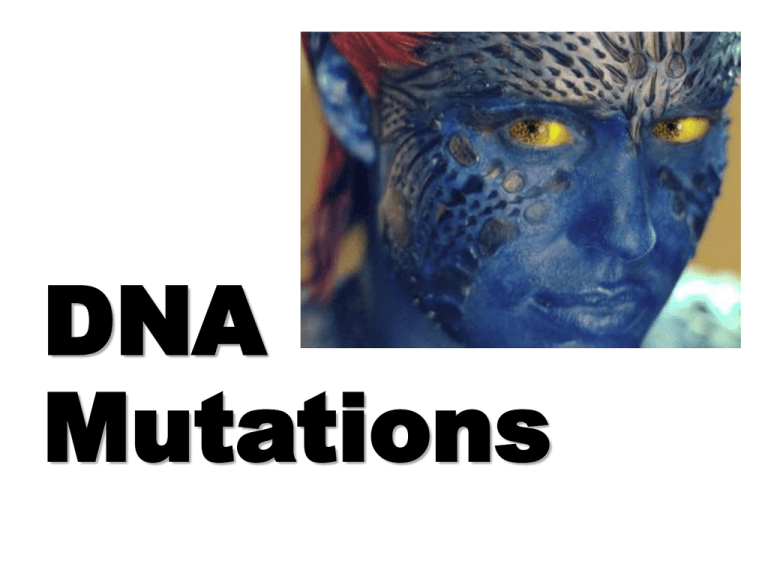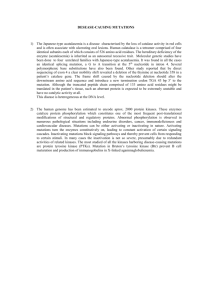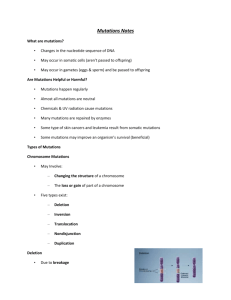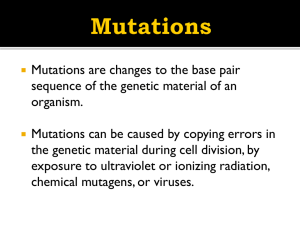Mutations
advertisement

DNA Mutations What Are Mutations? Changes in the nucleotide sequence of DNA May occur in somatic cells & aren’t passed to offspring May occur in gametes (eggs & sperm) and be passed to offspring Mutations happen regularly (its very common) Almost all mutations are neutral (doesn’t harm organism) Chemicals & UV radiation cause mutations – skin cancer Many mutations are repaired by enzymes Some type of skin cancers and leukemia result from somatic mutations Can you “catch” cancer from someone? NO! Some mutations may improve an organism’s survival (beneficial) Types of Mutations 1. Chromosomal 2. Gene Chromosomal Mutations May Involve: Changing the structure of a chromosome The loss or gain of part of a chromosome Chromosomal Mutations Five types exist: Deletion Inversion Duplication Translocation Nondisjunction Deletion Due to breakage A piece of a chromosome is lost Inversion Chromosome segment breaks off Segment flips around backwards and reattaches Duplication Occurs when a gene sequence is repeated Translocation Involves two chromosomes that aren’t homologous (similar) Part of one chromosome is transferred to another chromosomes Nondisjunction Failure of chromosomes to separate during meiosis (making of sperm or egg) Causes gamete to have too many or too few chromosomes Chromosome Mutation Animation Disorders caused by nondisjunction: • Down Syndrome • Turner Syndrome • Klinefelter’s Syndrome Normal Female Karyotype 2n = 46 Normal Male Karyotype 2n = 46 Female Down’s Syndrome 2n = 47 Male, Trisomy 21 (Down’s) 2n = 47 Turner’s Syndrome 2n = 45 Klinefelter’s Syndrome 2n = 47 Gene Mutations Change in the nucleotide sequence of a gene May only involve a single nucleotide May be due to copying errors, chemicals, viruses, etc. Types of Gene Mutations Include: Point Mutations Substitutions Insertions Deletions Frameshift Mutations Point Mutation • Change of a single nucleotide • Includes the deletion, insertion, or substitution of ONE nucleotide in a gene Point Mutation Sickle Cell disease is the result of one nucleotide substitution Occurs in the hemoglobin gene Deletion Substitution a single nucleotide is substituted with (or exchanged for) a different nucleotide that may result in an altered sequence of amino acid Insertion Nucleotides are inserted into sequence altering codon pattern Frameshift Mutation Inserting or deleting one or more nucleotides Changes the “reading frame” like changing a sentence Proteins built incorrectly Frameshift Mutation Original: The fat cat ate the wee rat. Frame Shift (“a” added): The fat caa tet hew eer at. Gene Mutation Animation








